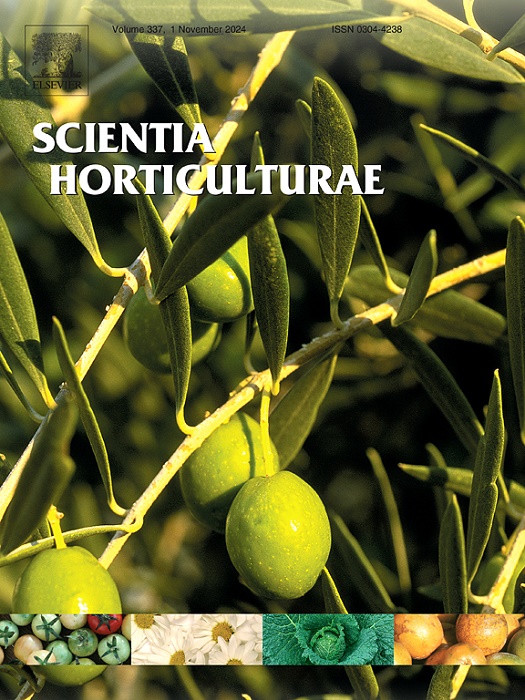Multi-omics analysis of genetic differences between Guangchenpi and Huajuhong
IF 3.9
2区 农林科学
Q1 HORTICULTURE
引用次数: 0
Abstract
Guangchenpi and Huajuhong are valuable Chinese medicinal herbs mainly derived from Citrus reticulata ‘Chachiensis’ (CZG) and Citrus grandis Tomentosa (HZY). However, genetic differences between Guangchenpi and Huajuhong have not been analysed, which hinders a thorough understanding and optimisation of their efficacy and quality control. Herein, genome, transcriptome and metabolome multi-omics analysis was employed to compare genetic differences between CZG and HZY. CZG contained more genes, especially those related to metabolic activity. The differentiation time of pomelo-associated genera with closer evolutionary relatedness to HZY was earlier than that of citrus-associated genera with closer evolutionary relatedness to CZG. CZG and HZY had more genes associated with flavonoids and terpenoids upregulated in peel than other tissues. Widely-targeted and volatile metabolome analysis revealed that changes in flavonoids and terpenoids were consistent with the expression patterns of related pathway genes. The five major categories of metabolites in the peel of CZG and HZY, namely flavonoids, lignins, coumarins, terpenoids and alkaloids, were compared. Differences in these metabolites largely explained the differences in medicinal properties between CZG and HZY. This study provides insights for the cultivation and development of new traditional Chinese medicine products in the future.
求助全文
约1分钟内获得全文
求助全文
来源期刊

Scientia Horticulturae
农林科学-园艺
CiteScore
8.60
自引率
4.70%
发文量
796
审稿时长
47 days
期刊介绍:
Scientia Horticulturae is an international journal publishing research related to horticultural crops. Articles in the journal deal with open or protected production of vegetables, fruits, edible fungi and ornamentals under temperate, subtropical and tropical conditions. Papers in related areas (biochemistry, micropropagation, soil science, plant breeding, plant physiology, phytopathology, etc.) are considered, if they contain information of direct significance to horticulture. Papers on the technical aspects of horticulture (engineering, crop processing, storage, transport etc.) are accepted for publication only if they relate directly to the living product. In the case of plantation crops, those yielding a product that may be used fresh (e.g. tropical vegetables, citrus, bananas, and other fruits) will be considered, while those papers describing the processing of the product (e.g. rubber, tobacco, and quinine) will not. The scope of the journal includes all horticultural crops but does not include speciality crops such as, medicinal crops or forestry crops, such as bamboo. Basic molecular studies without any direct application in horticulture will not be considered for this journal.
 求助内容:
求助内容: 应助结果提醒方式:
应助结果提醒方式:


